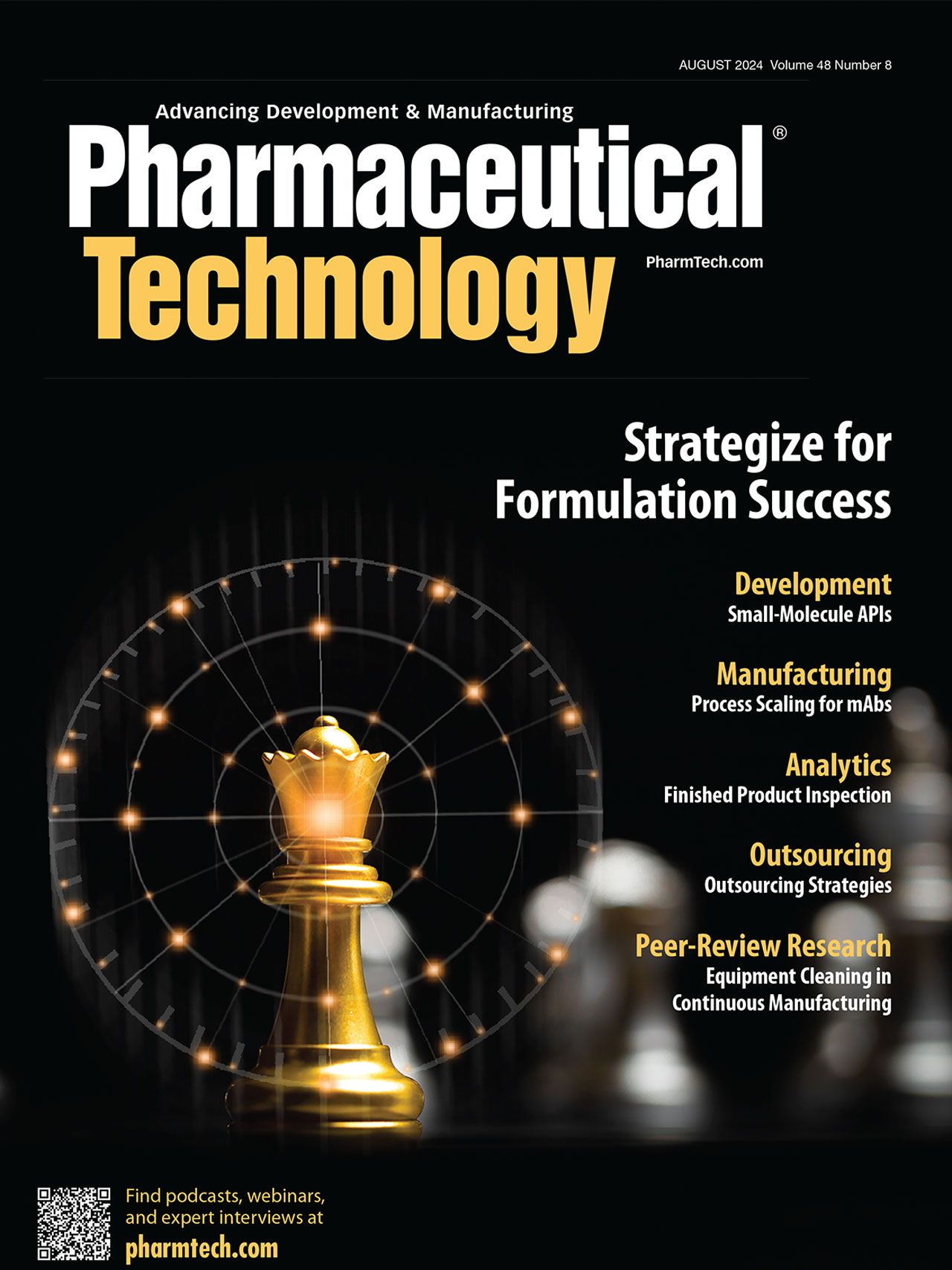Contracting Out Frees Sponsors Up
Contract organizations offer sponsors specialized equipment, capacity, and expertise for testing, manufacturing, and packaging bio/pharmaceutical products.
Delegation scheme or company structure. Figures and wooden arrows. | Image Credit: ©Vitalii Vodolazskyi - stock.adobe.com

Contract organizations offer sponsor companies flexibility by providing capacity, expertise, knowledge, and cost savings. Contract manufacturing organizations (CMOs), contract development and manufacturing organizations (CDMOs), and other contract organizations can also offer smaller bio/pharma companies greater opportunities, by providing the resources smaller biopharma companies may not have. According to Robert O’Brien, director operations—Packaging & Logistics at Almac Pharma Services, sponsor companies should consider if contracting activities to a CMO is more cost effective than performing those activities in-house. O’Brien points to direct access to specialists and equipment, a level of control of quality standards, and requirements for scale up as factors to consider when deciding whether to outsource or not. “Outsourcing enables the sponsor company to concentrate on their core competencies, product innovation, and strategic initiatives,” O’Brien says.
When making the decision to outsource a particular process to a contract partner, there are several things sponsor companies should consider. Tech transfer is an important step when outsourcing to a CDMO and should be evaluated when choosing to outsource processes, specifies Peter Ercoli, chief operating officer, Biologics, at BIOVECTRA. Ineffective tech transfers can lead to persistent complications, adds Ercoli. “Conversely, sponsors should ensure their processes are completely defined before initiating a tech transfer, unless they want the CDMO to define it for them. In the case where sponsors are leaning on the CDMO to define their tech transfer process, both parties must be clear on this understanding from the outset,” he says.
Not following regulatory requirements can also complicate the situation when working with CDMOs, according to Ercoli. “The last thing a sponsor wants is to successfully complete the tech transfer and scale-up phases only to fail a pre-approval inspection. Such a failure can be catastrophic, potentially setting back the project by months or even years. While other challenges can be managed with guidance or collaboration, the readiness of facilities and personnel for regulatory inspections is non-negotiable and must be thoroughly vetted,” he says.
Outsourcing product testing
The benefits of an outsourcing partner extend to most, if not all, aspects of development and manufacturing, and analytical testing is no different. “CDMOs amass a great breadth and depth of knowledge through their exposure to a wide range of product types including small molecules, peptides, biologics, conjugates, highly potent, and controlled substances,” says Susan Hackett, associate director—Technical Operations, Almac Sciences. “Additionally, not all companies have the appropriate infrastructure to accommodate analytical testing; therefore, outsourcing these operations to an established CDMO helps to save time and cost.”
Outsourcing finished product testing is beneficial for sponsors, because it can provide unbiased results, according to Shailesh Vengurlekar, senior VP Quality & Regulatory Affairs, at LGM Pharma. Sponsor companies should consider the quality of the work and the data provided by a contractor when selected a testing partner. Turnaround time, infrastructure, cost, and communication are also key, according to Vengurlekar.
“Sponsors typically benefit most when outsourcing complex testing services that they may not have the capability (equipment, personnel expertise, time, etc.) to perform in-house,” says Vengurlekar. “[Whereas], it is also beneficial to sometimes outsource simple and routine testing involving a lot of the sponsor’s time and labor. The time can be better utilized by the Sponsors to develop their product database as well as on timely submissions to meet company goals.”
A robust methodology can be achieved by outsourcing method development and validation, remarks Hackett. “As the drug develops, working with a provider who has a dedicated team utilizing orthogonal techniques such as mass spec[trometry], ID testing, can be hugely beneficial and help to resolve any issues much quicker,” says Hackett. “For finished product testing, outsourcing to a partner who has the capability, capacity, and resources to manage all testing aspects together can alleviate many of the issues which inherently arise during drug development.”
Hackett stresses that both the sponsor and the contractor are responsible for analytical testing and should maintain good communication. “Ensuring that there is equivalent equipment between the labs is an obvious solution, and that the methods are fully understood by both teams,” she says. “Robust processes, particularly with method transfer and familiarization, should also ensure the chances of success. However, as stated, having access to a team who are well experienced in orthogonal techniques can be hugely beneficial if [testing failures] occur to conduct deeper analysis to troubleshoot and find a resolution,” says Hackett.
“[Testing results] may vary [from sponsor to contractor] if the method transfer has been incorrectly performed or same methodology/equipment are not used by testing laboratories. Significant variations or laboratory errors are observed due to lack of proper training, poor quality of protocols, or detailed procedures,” says Vengurlekar. “Typically, collaboration between both parties is required to investigate the results from both ends to determine the true value. The sponsor should always take the lead to investigate the root cause and guide contractor labs to put appropriate corrective and preventive actions (CAPAs) in place.”
Packaging the product
Packaging is one of the final steps when manufacturing a bio/pharmaceutical product and sending it out to the market. The quality of a product can be compromised by a variety of factors, including temperature; therefore, O’Brien notes that packaging materials should be carefully selected. Other challenges include labeling and serialization requirements.
Packaging providers can provide cost savings by sparing a sponsor from having to invest in equipment, facilities, personnel, and a broad network of suppliers, according to O’Brien. Contractors may offer state-of-the-art technology and staff training, he states. “[O]utsourcing allows sponsors to achieve scalability and flexibility, enabling them to scale their packaging operations up or down based on demand. This flexibility is crucial for adapting to market fluctuations and growth opportunities,” O’Brien states.
Contracting out packaging services can also offer a layer of quality control. Contract packagers offer experience with regulations in various territories and can help ensure safety and quality standards are correctly met, specifies O’Brien. “External partners often have robust quality control systems in place. This ensures that packaging adheres to industry and highest quality standards ensuring products maintain stability throughout the supply chain,” he says.
When partnering with a contract packager, O’Brien stresses that specifications, timelines, and quality standards must be aligned with both parties. “Risk management is a key concern—it’s vital to mitigate potential disruptions to the supply chain that may arise due to unforeseen events. Quality control is similarly critical—consistency and compliance across the packaging process must be maintained. Cost management—balancing cost-effectiveness with quality—is a perpetual consideration,” says O’Brien. “Lastly, intellectual property protection must be addressed to safeguard proprietary information during collaboration. Overall, these challenges can be overcome through close collaboration, transparency, and clear agreements between both parties to ensure successful outcomes.”
Changing the partner or the product
Partnerships don’t always work out. But what if that partnership is the development and/or manufacture of an important drug product? If a sponsor company must change from one contract manufacturer to another when a project is already underway, what challenges may they face? Transferring mid-project from one contract to another requires close coordination, according to O’Brien, to minimize delays and costs.
“Proactive planning and open communication including full, and early, transparency regarding any concerns, is key to overcoming these challenges,” says O’Brien. “In addition, rigorous quality control measures are essential to ensure consistent quality between the existing and new provider. Finally, internal and partner teams should be cautious and thorough when migrating data, documentation, and intellectual property to avoid delays and errors during the transition. Both parties need to adjust to new processes, communication channels, and expectations therefore continual briefing, communication and escalation, where required, is essential throughout.”
“When switching from one CDMO to another during a project, the new partner or CDMO should be given access to communicate with the innovator directly,” says Ercoli. “This approach allows for a clear understanding of the development context and enables questions to be answered accurately. Direct access to the innovator ensures that the original intent of the project is preserved. Otherwise, transitioning from one CDMO to another often results in miscommunication. The process can resemble a game of ‘telephone’, where information is passed along through multiple intermediaries, leading to potential distortions. By the time the message reaches the new CDMO, the original intent may be lost, complicating the project further. To mitigate these risks, all parties involved should strive to keep open lines of communication as much as possible during the transition.”
Conclusion
Outsourcing can provide a variety of benefits for a sponsor, whether the outsourced service is testing, packaging, manufacturing, or another process in the lifecycle of the product. If a sponsor chooses to outsource work, they should keep quality in mind. Contractors will most likely have several customers; therefore, sponsors should look for customized quality control (1).
“When CDMOs develop quality agreements with a greater focus on client needs, it can increase trust, compliance, and even make audits easier to manage. Complex procedures can be simplified by engaging all parties and clearly documenting in the quality agreement from the start. While this may add initial time and cost, over the long run this will pay out with less process issues, including errors or oversights,” said Iain McGhee (1).
Taking these factors into consideration can help a sponsor company create the best outsourcing strategy for the company, the product, and the patient.
Reference
1. McGhee, I. Ensuring Quality in Contracted Support. BioPharm International Partnerships for Outsourcing eBook. May 2024.
About the author
Susan Haigney is lead editor with Pharmaceutical Technology®.
Article details
Pharmaceutical Technology®
Vol. 48, No. 8
August 2024
Pages: 31–33
Citation
When referring to this article, please cite it as Haigney, S. Contracting Out Frees Sponsors Up. Pharmaceutical Technology 2024 48 (8).
